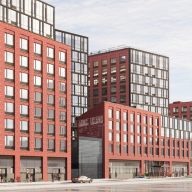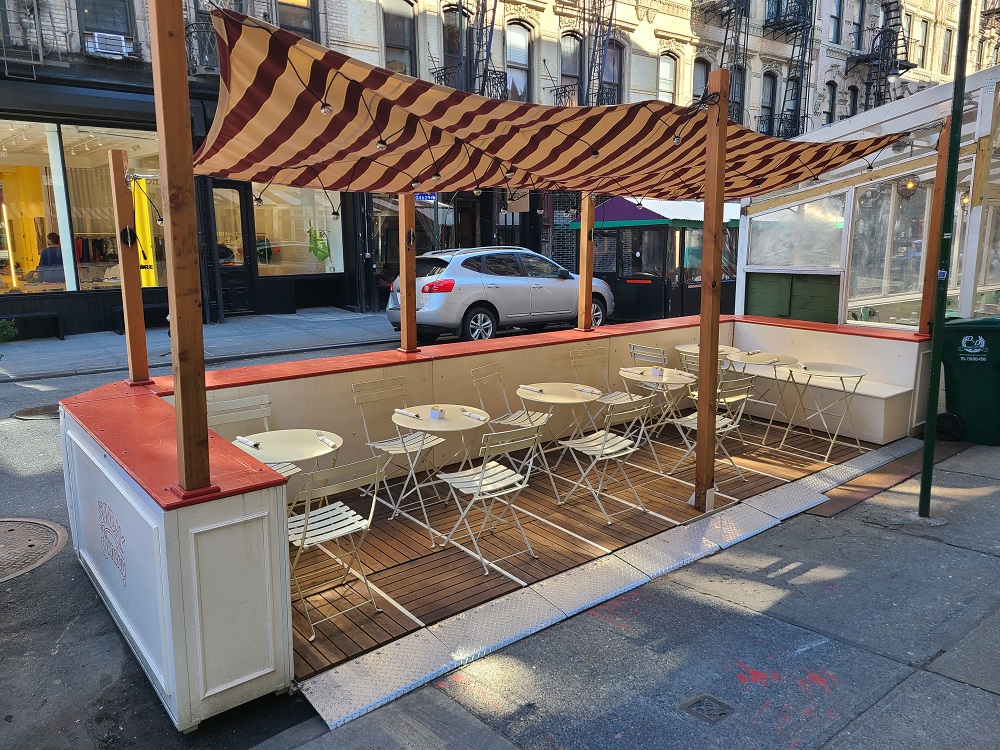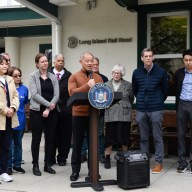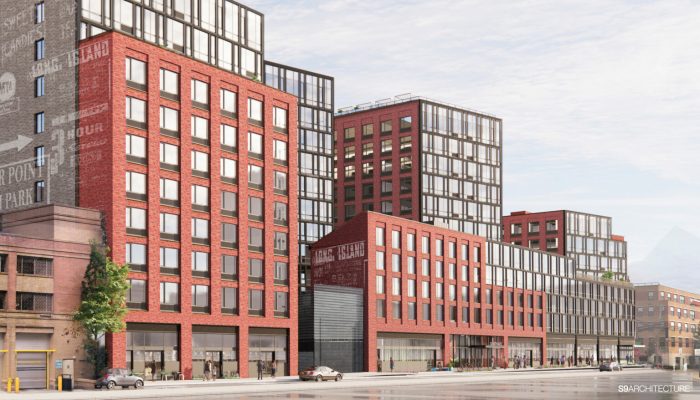By Gary Buiso
City planners will soon set their sights along the redolent shores of the Gowanus Canal, and elsewhere, as the beginning stages of a possible rezoning of the area get underway next week. The Department of City Planning insists that its presence at the Jan. 25 meeting of the Land Use/Landmarks Com-mittee of Community Board 6 is only the beginning of what will likely be a long discussion. “Our objective in this public process will be to develop consensus for a framework to guide future land use decisions in the Gowanus Canal area,” said Jennifer Torres, a City Planning spokesperson. The agency’s presence is a direct response to requests from community members and elected officials that the area be examined. City Councilmember Bill de Blasio said he is “very pleased that the Department of City Planning is beginning the process of holding public meetings to get a sense of what the community wants to see in the Gowanus Canal area.” De Blasio’s district holds the bulk of the area in question. “Moving forward, I am committed to making sure that as much affordable housing gets built in the area as possible,” he said. Since much of the area is zoned for uses that do not allow residential housing, a change in zoning would be necessary to see any type of housing constructed. Any rezoning must receive the approval of the City Council, and ultimately the mayor. Craig Hammerman, the district manager of Community Board 6, said the meeting will be the start of a planning discussion that could ultimately lead to rezoning actions. “We have been pursuing City Planning ever since the Park Slope rezoning was completed in 2003, inviting them to take a comprehensive look at the Gowanus Canal corridor to see what if anything could be done from a planning perspective to ensure a vital future for the canal,” Hammerman said. “What we hope will emerge are some clear and distinct boundaries between where businesses are thriving, where it makes sense to look at some residential development and in between the two, if there are opportunities as buffers for some formalized recreation uses in the area,” the district manager continued. A driving factor for the board’s attempt to initiate the discussion, Hammerman said, has been the pattern of developers seeking from the city special permits or variances that would allow the conversion of former manufacturing buildings into residential housing. In the cases of 460 Union Street and 130 3rd Street, for example, the board felt that neither project was appropriate for an area where manufacturing businesses still thrive, and piecemeal zoning changes are shunned. “What is motivating this is the market pressures in the area to do something different than what the zoning will allow.” Where existing manufacturing or industrial uses will fit in, remains to be seen. “It is vital that such considerations are central to the discussion,” Hammerman said. “There are some very good and thriving clusters of business around the canal.” Phaedra Thomas, the executive director of the Southwest Brooklyn Industrial Development Corporation, a business advocacy group, would tend to agree. “We will work very hard to make sure small businesses in Gowanus are made a part of any land use discussion,” Thomas said. “What we really ask is that we all think creatively in Gowanus, and we do not consider it a blank slate…it needs unique planning approaches,” she continued. Only one thing is certain in the future, Thomas said. “Any decision making process that results in the loss of small businesses and jobs is scary, however, change is inevitable.” Thomas said she isn’t conceding anything. “Our number one goal is always retaining businesses and jobs,” she continued. “And hopefully, increasing them.” “The introduction of housing does not have to mean the displacement of business,” she said. Debra Scotto, a local developer and member of the board’s Land Use Committee, said the issue that will most assuredly raise its head is the pressing need to construct more affordable housing. “The issue will be how much density will be built, as well as how much manufacturing we can keep,” she said. Scotto is the daughter of Salvatore ‘Buddy’ Scotto, founder of the Gowanus Canal Community Development Corporation and the Carroll Gardens Association, an organization that develops affordable housing. The tension, she predicted, will be less about where manufacturing will fit into a potential rezoning plan, and more about how affordable housing can be accommodated within any new plan. That’s because, Scotto noted, as much as people don’t want to see the construction of huge, shadow-creating buildings, they are often the only way affordable housing can makes sense, for a developer’s perspective. “It’s very difficult to build low and do affordable,” she said.





























